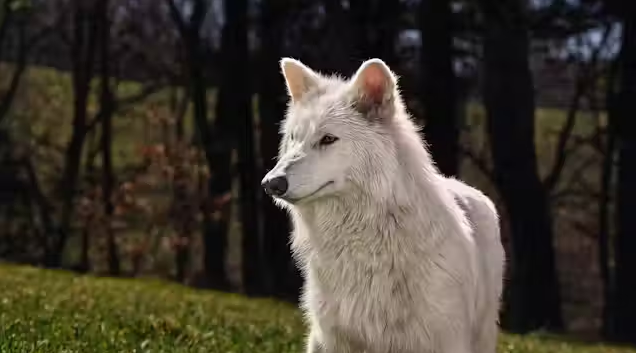
Scientists at Colossal Biosciences celebrated their major scientific achievement when they successfully revived the extinct dire wolf predator from its disappearance during the 12,500-year period on April 9, 2025. Awareness of dire wolf-like pups born through ancient DNA research using gene-editing methods established a new scientific phase about de-extinction while creating ethical uncertainties alongside ecological concerns. The dominant North American predator named dire wolf disappeared because of changing environments and activities conducted by human populations. Scientists utilize genetic engineering advances to examine potential ways for restoring vanished species because this approach supplements ecological recovery and evolutionary studies.
Context:
-
Scientists at Colossal Biosciences celebrated their major scientific achievement when they successfully revived the extinct dire wolf predator from its disappearance during the 12,500-year period on April 9, 2025
About Dire Wolf:
-
Scientific name: Aenocyon dirus.
-
Larger and more robust than the modern grey wolf.
-
The dire wolf subsisted by hunting huge herbivorous animals which included bison together with horses.
-
Extinct: approximately 12,500 years ago.
De-Extinction Process:
-
The extraction of ancient DNA relied on a 13,000-year-old tooth alongside 72,000-year-old skull material.
-
The analysis of genetic material proved grey wolf stood as the most related existing species to dire wolves.
-
By applying gene editing scientists modified dire wolf characteristics to living canids.
Birth of the Pups:
-
The breeding occurred during October 2024 when Romulus and Remus emerged as two male pups.
-
The dire wolf breeding process resulted in the birth of Khaleesi the female pup in January 2025.
-
Raised in a 2,000-acre secure facility.
-
Current wolf packs display social behaviors which differ from how dire wolves grouped together.
Scientific and Ethical Considerations:
-
Both pups carry 99.5% wolf DNA but their genetic structure does not match that of dire wolves.
-
Scientists dispute if animals made through de-extinction can properly replicate their extinct relatives.
-
Scientists worry about how reintroduced species behave as well as their welfare condition while examining their ecological impact.
Future Prospects:
-
The bioengineering company Colossal Biosciences intends to develop de-extinction efforts targeting both woolly mammoths and dodos.
-
Success and survival of such species in the wild remain uncertain.
Technological Impact:
-
The capability exists to utilize genome reconstruction for helping conservation initiatives.
-
The obtained research can help establish preventive methods to keep present species from going extinct.
-
Raises philosophical questions about human intervention in evolution and nature.
Conclusion
The resurrection of the dire wolf marks a significant advancement in biotechnology since it merges reality with once-unthinkable concepts from science fiction. Future synthetic biology research will require comprehensive ethical standards and thorough environmental effect studies to coordinate its development because this technology creates new possibilities for ecological conservation and restoration.



 Mauritius Becomes First African Nation to Sign ISA’s Country Partnership Framework 2025
Mauritius Becomes First African Nation to Sign ISA’s Country Partnership Framework 2025 Amnesty International's Death Sentences and Executions 2024
Amnesty International's Death Sentences and Executions 2024 Dubai Crown Prince Visit Boosts India-UAE Strategic, Trade, and Education Ties
Dubai Crown Prince Visit Boosts India-UAE Strategic, Trade, and Education Ties Ottawa Convention on Anti-Personnel Mines: Strategic Shifts and Humanitarian Concerns
Ottawa Convention on Anti-Personnel Mines: Strategic Shifts and Humanitarian Concerns 6th BIMSTEC Summit: Advancing Regional Cooperation in the Bay of Bengal
6th BIMSTEC Summit: Advancing Regional Cooperation in the Bay of Bengal India-Sri Lanka Sign Historic Defense Pacts For The Future
India-Sri Lanka Sign Historic Defense Pacts For The Future India Urges BRICS to Back ‘Baku to Belem Roadmap’ for $1.3 Trillion Climate Finance
India Urges BRICS to Back ‘Baku to Belem Roadmap’ for $1.3 Trillion Climate Finance Recalling the Smoot-Hawley Tariff Act: A Catalyst for the Great Depression
Recalling the Smoot-Hawley Tariff Act: A Catalyst for the Great Depression India Launches ‘Operation Brahma’ for Quake-Hit Myanmar
India Launches ‘Operation Brahma’ for Quake-Hit Myanmar






